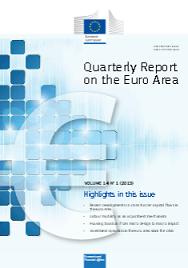European Commission, Quarterly Report on the Euro Area, Vol. 14, No. 1(2015), DG for Economic and Financial Affairs, Vol. 14, No. 1, Απρίλιος 2015.
Marco Buti: Editorial
According to the European Commission’s latest winter forecast published in February, the economies of all euro area Member States are expected to grow again for the first time since 2007. The aggregate real GDP growth rate of the euro area was revised upwards compared with the autumn forecast to 1.3 % in 2015 and 1.9 % in 2016.
The upward revision to the growth outlook is based on several factors. The substantial decline in oil prices is having a positive impact on real disposable income. The euro depreciation should support exporters’ competitiveness. The gradual strengthening of foreign demand and the expanded asset purchase programme by the European Central Bank (ECB) are further drivers of the more positive prospects. Furthermore, following the large retrenchment of the last years, fiscal policy has turned neutral for the euro area as a whole. Finally, structural reforms especially in vulnerable countries seem to start to pay off.
Despite the positive news, growth prospects across the euro area remain fragile. In the short term, the economy still has to turn the tailwinds into a self-sustaining recovery. Furthermore, medium-term growth prospects are hindered by well-known challenges, inter alia, by an ageing population and structural rigidities.
As a consequence, it is crucial to use this window of opportunity to act. Policy action is needed to tackle short-, medium and long-term challenges.
In the short-term, investment needs to be increased and confidence further restored. A European Fund for Strategic Investments (EFSI) is being set up, which provides the additional financing for projects of strategic importance of the European Investment Plan (EIP). At the same time, progress is being made to improve the investment environment by removing regulatory bottlenecks at the EU and national level. While the current neutral fiscal stance for the euro area strikes an appropriate balance between stabilisation and sustainability considerations, its distribution (between countries) and composition (between expenditure and revenue) need to be further improved.
In the medium-term, the euro area needs to reach a higher potential growth path. Member States should therefore stick to their promises and implement structural reforms, in particular to address the declining working-age population, the high structural unemployment and the reduced trends in total factor productivity. To encourage the effective implementation of structural reforms, the Commission decided to take into account major reforms with a verifiable long-term positive budgetary effect under the existing rules of the Stability and Growth Pact (SGP).
In the long-term, the euro area needs better economic governance. The global economic and financial crisis endangered the integrity of the euro area as a whole. The EMU framework thus still needs to be made fully compatible with the requirements of sharing a common currency. For this reason, the President of the European Commission, in close cooperation with the Presidents of the Euro Summit, the Eurogroup and the ECB, is expected to prepare proposal for a better economic governance in the euro area by June 2015, based on the analytical contribution presented at the informal euro area summit in February.
In brief, the current economic situation offers a welcome opportunity to use the tailwinds to leave behind the low growth, low investment and low inflation path on which the euro area economy has been trapped in recent years. Let us use not waste this opportunity.
Σχετικές αναρτήσεις:
- European Commission, (2014), “Quarterly report on the euro area”, Vol. 13, N. 3 (2014).
- European Union, (2013), Quarterly Report on the Euro Area, Volume 12, No.4
- European Union (2013) Quarterly Report on the Euro Area, Volume 12, No. 3, pp. 1-34.




